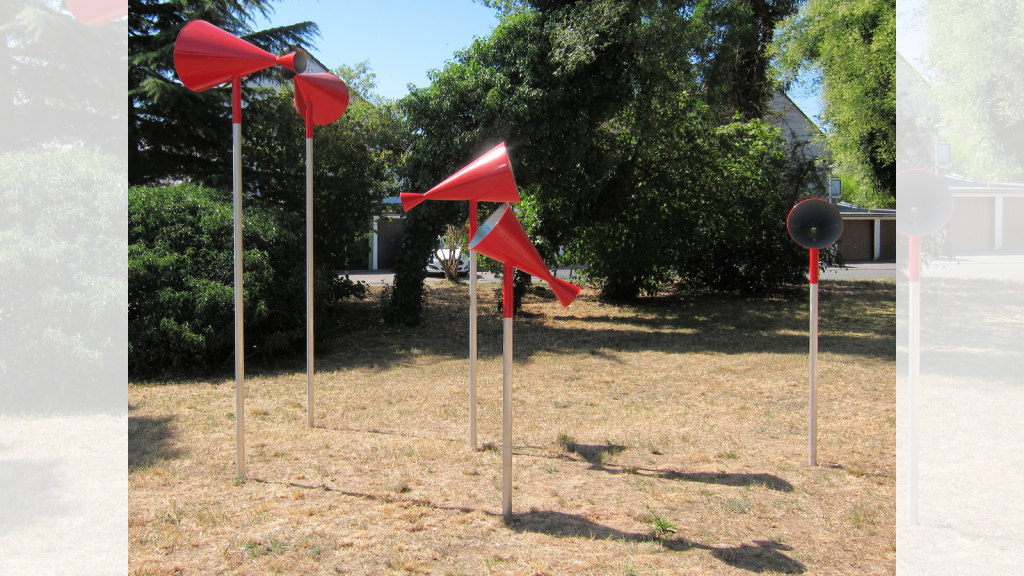Sound is everywhere, filling our lives with music, conversation, and even noise. But have you ever stopped to think about how sound really works? It’s something we experience daily but rarely consider in depth. The science behind sound is fascinating, involving waves, vibrations, and even how animals and humans hear. There are so many surprising, and sometimes mind-blowing, facts about sound that will make you appreciate the world of vibrations all around us. From how fast it travels to its strange interactions with the natural world, here are 13 unbelievable facts about the science of sound!
1. Sound Travels Faster in Water Than in Air

Sound waves travel more than four times faster in water than in air. This happens because water particles are packed closer together than air particles, making it easier for the energy from sound waves to transfer between them. In fact, whales and dolphins use this to communicate across vast ocean distances. While sound moves at 343 meters per second in air, in water it can travel at around 1,480 meters per second!
2. Humans Can’t Hear Most Sounds in the World

Our hearing range is limited to sounds between 20 and 20,000 Hertz (Hz). Anything below 20 Hz is known as infrasound, and above 20,000 Hz is called ultrasound. Many animals, like elephants and dogs, can hear frequencies that humans can’t. Bats, for example, navigate and hunt using ultrasonic waves, which are far too high-pitched for us to detect. So, while the world is filled with sound, we only perceive a small portion of it.
3. The Loudest Sound Ever Recorded Came from a Volcano

The loudest sound in recorded history was caused by the eruption of the Krakatoa volcano in 1883. The explosion was so loud that it ruptured the eardrums of sailors more than 40 miles away and was heard as far as 3,000 miles from the source! It’s estimated that the sound reached a staggering 180 decibels, a level that could easily cause permanent hearing loss.
4. Sound Doesn’t Travel in Space

In space, there’s no air or other medium to carry sound waves, so sound can’t travel at all. This means that despite the explosive events occurring in space—like supernovae or collisions—you wouldn’t hear any noise. It’s only on planets or inside spaceships, where there is air or another medium, that sound can be heard. If you screamed in outer space, no one would hear you!
5. The Human Voice Is Unique Like a Fingerprint

Each person’s voice is distinctive due to the unique shape and size of their vocal cords, throat, and mouth. These anatomical differences create a personal resonance and timbre. That’s why even identical twins, who share the same DNA, will have slightly different voices. It’s a key reason voice recognition technology has become so advanced!
6. Some Animals Use Sound to “See” Their Environment

This process, known as echolocation, is used by animals like bats, dolphins, and some species of birds. They emit high-frequency sounds that bounce off objects in their surroundings, allowing them to “see” using the returning echoes. Bats are able to navigate pitch-black caves and hunt with precision thanks to their incredible echolocation abilities.
7. The Speed of Sound Changes with Temperature

Sound travels faster in warmer air than in cooler air. This happens because heat makes air molecules move faster, making it easier for sound waves to pass through them. For example, at 20°C (68°F), sound travels at about 343 meters per second. But when the temperature drops to 0°C (32°F), the speed of sound drops to 331 meters per second.
8. You Can Break Glass with the Right Sound Frequency

The phenomenon of a singer shattering glass with their voice is real! This happens when the frequency of the sound matches the natural resonant frequency of the glass. When the singer hits the right note, the vibrations become too much for the glass to handle, causing it to break. It takes a very precise pitch and loudness, but it’s a perfect example of how sound waves can manipulate physical objects.
9. Sound Can Cause Physical Pain

Extremely loud sounds, especially those above 120 decibels, can cause discomfort or even physical pain. Sounds like a jet engine taking off, a gunshot, or an explosion can be so intense that they hurt your ears and cause hearing damage. This is because the sound waves can cause vibrations that are too strong for the sensitive structures inside the ear to handle.
10. Babies Can Recognize Their Mother’s Voice Before Birth

Studies have shown that babies start hearing and recognizing sounds while still in the womb. Around the 25th week of pregnancy, the baby’s ears are developed enough to pick up external sounds, with the mother’s voice being the most clearly heard. Newborns often show a preference for their mother’s voice over other sounds shortly after birth.
11. Whales Sing the Longest Songs in the Animal Kingdom

Humpback whales are famous for their long, complex songs, some lasting up to 20 minutes! These songs are made up of repeated patterns and can be heard over long distances underwater. Male humpback whales use these songs to communicate and possibly attract mates during the breeding season, and their songs can even evolve over time.
12. Some Sounds Can Make You Sick

Low-frequency sounds, known as infrasound, can cause discomfort and even nausea in humans. These sounds, usually below 20 Hz, can be produced by natural events like earthquakes or by man-made machines. While you can’t consciously hear these sounds, your body can feel them, and they can cause dizziness, headaches, or even feelings of anxiety.
13. Thunder Is Caused by Rapidly Expanding Air

When lightning strikes, it heats the surrounding air to temperatures of up to 30,000°C (54,000°F) in an instant. This sudden heat causes the air to expand explosively, creating the sound we hear as thunder. The rumbling effect is caused by the sound waves bouncing off different surfaces and layers of air as they travel toward your ears.
17 Old Wives’ Tales That Are Actually True

Old wives’ tales have been passed down through generations, often dismissed as mere superstition. However, many of these age-old beliefs are rooted in truth. From health tips to weather predictions, these stories from the past can surprise us with their accuracy. Here are 17 old wives’ tales that are actually true.
Read More: 17 Old Wives’ Tales That Are Actually True
Ellen has been obsessed with logic puzzles, jigsaws, and cryptograms since she was a kid. After learning she was taught how to play chess wrong by a family friend (so they could win), she joined her school chess club and the rest is history.


